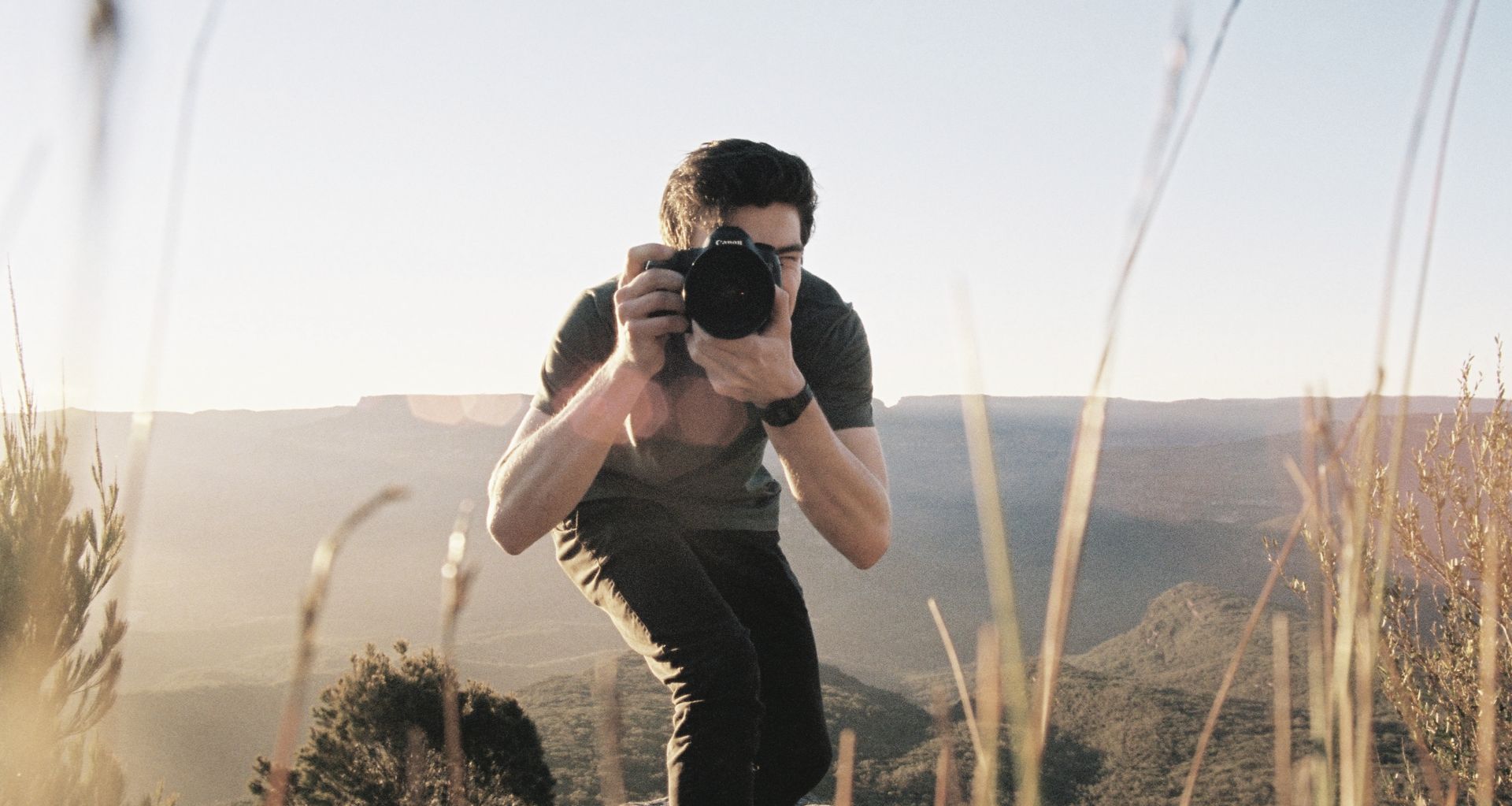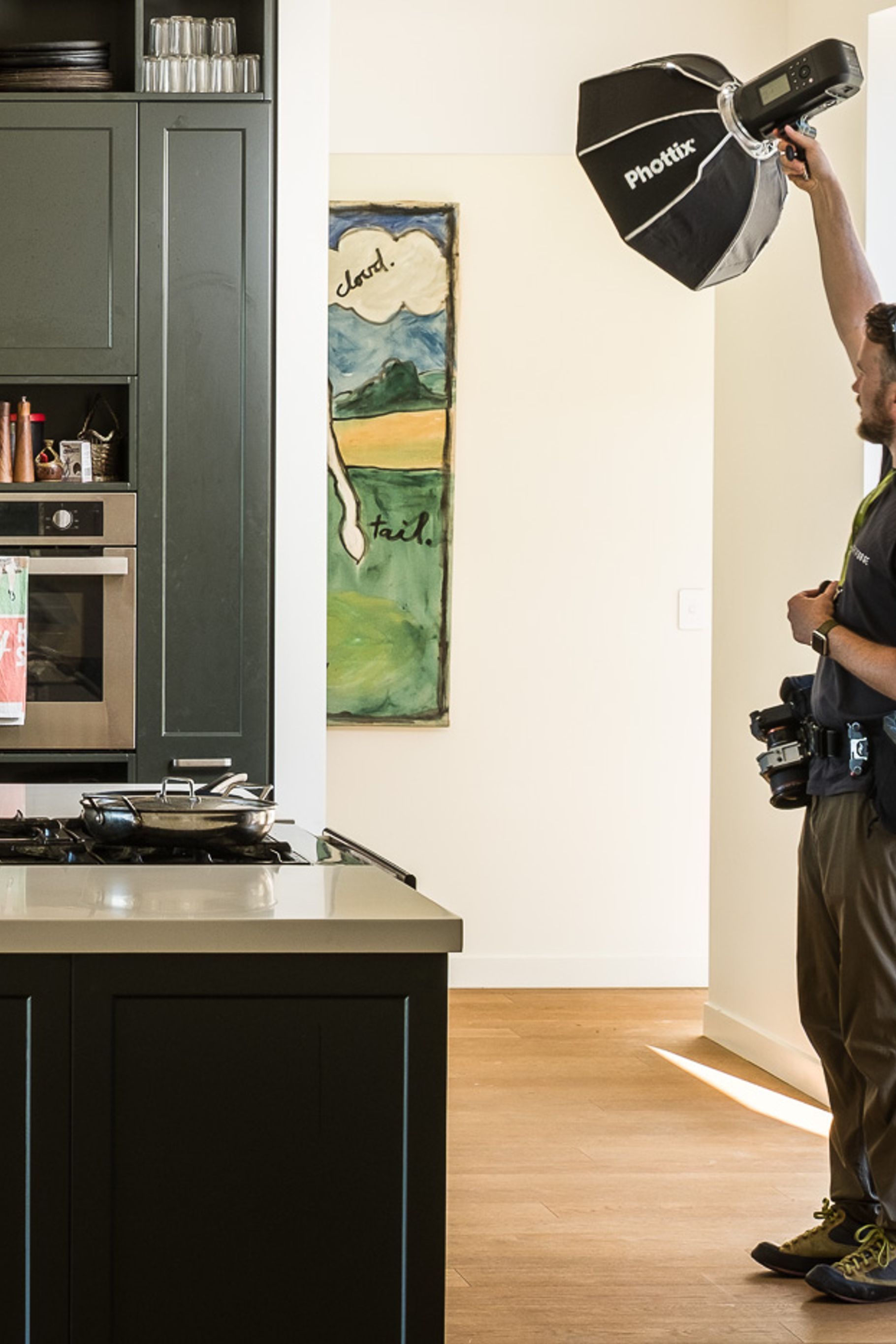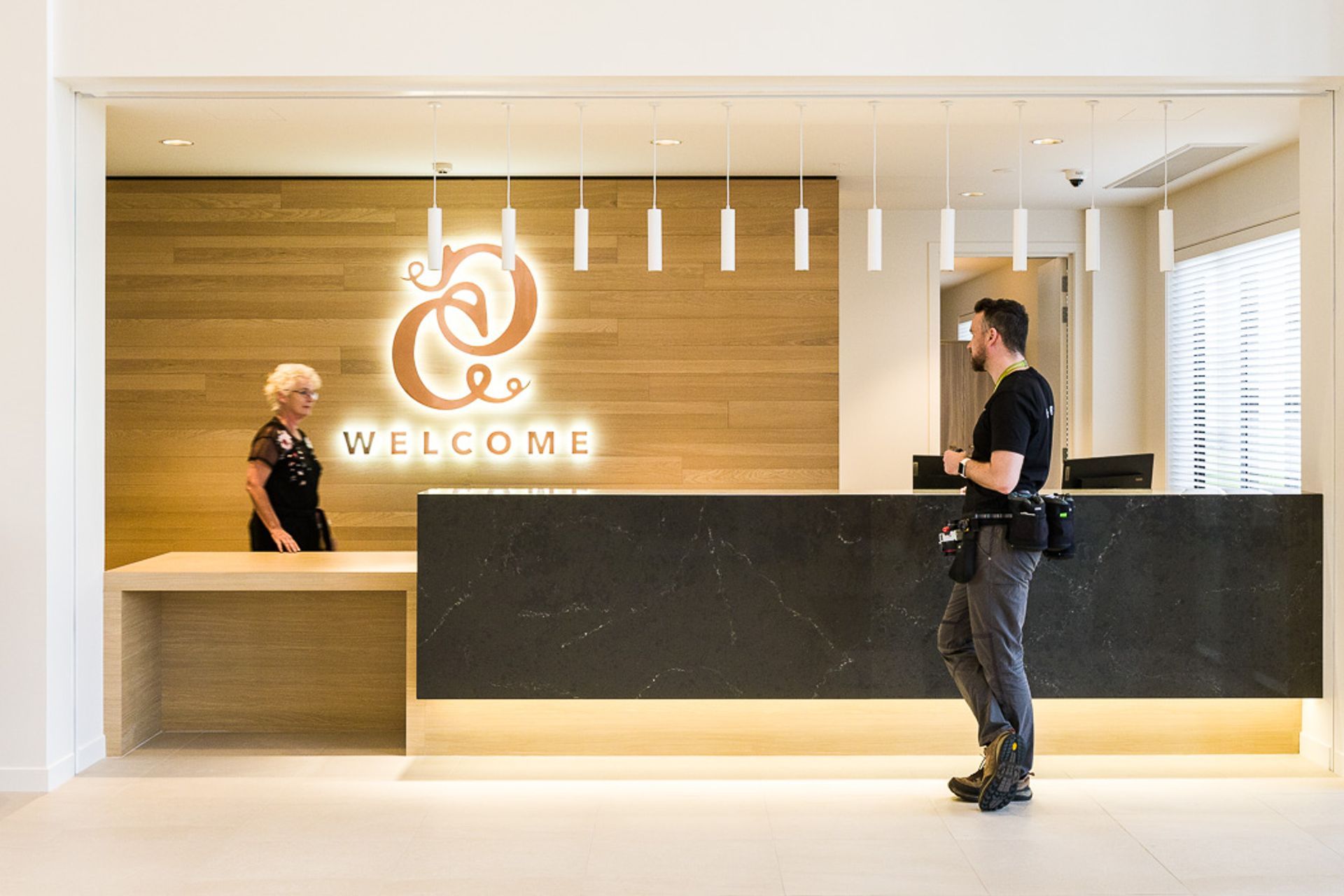Top 5 mistakes designers make when photographing their own work
Written by
01 October 2021
•
5 min read

When browsing through an architect or designer’s projects online, the first point of contact you have with the brand is the imagery. If the images have been taken on a phone, it immediately raises some questions around the level of professionalism and attention to detail.
Professional architecture photographer Dennis Radermacher says photographing buildings and interiors is far from simple.
“When it comes to architectural photography there’s a dozen things you have to get right to really pull it off: attention to light, symmetry, to geometry—they are all really important.”
To show your work in the best possible light, professional photography is key. Here we outline the top five mistakes people make when they neglect to engage the professionals.
1. Not having the right equipment
Architecture almost always consists of a geometric form, and to capture that form without visually warping it requires the right equipment.
“Something that people get wrong is converging verticals,” says Dennis. “You can easily tell an amateur from a professional when the vertical lines of a building are converging in the image.”
This occurs because within a normal perspective, a building will look like it’s leaning backward slightly when you look up at it, with the vertical lines converging. Professional photographers use tilt-shift lenses to keep the lines perfectly parallel in the image.
But beware, not all photographers use this equipment.
"Tilt-shift lenses are mostly used for niche applications like product photography. For architectural photography specifically they allow perspective control of converging lines."

2. Poor lighting
Lighting is absolutely crucial to express a space in its best, well, light. Too bright and the space looks harsh, too dull and the image looks depressing.
Natural lighting is always the best option, but it’s often not available. Sometimes the rooms of a house are orientated in such a way that a room receives little illumination, while the opposite can be true of homes orientated to the sun.
That’s when a professional photographer really demonstrates their skill.
“There are times when I simulate my own sunsets coming in through the window using a big light outside—if it’s overcast and it’s just not happening on the day, you just make your own sunshine!” says Dennis.
Sometimes a space just calls for a little bit of extra light. In this case “you can use a studio light and move it around to create the illumination you need.”
3. Not knowing what time of day to shoot
Professional architectural photographers spend their career trying to understand the way light hits the angles of a building or interior space at different times of day in order to best capture it.
For an individual shoot, they will often scope out the location before the day and speak to the home or building owner about where the light hits and when. They will know the times the sun rises on the day of the shoot and when the sun sets, so that they can capture each part of the building in its best light throughout the day.
"The client and I usually do a site recce together to determine which areas of a space need to be captured in the morning, at noon, or in the evening. I will then create a schedule around these requirements that meets other needs like access restrictions or the availability of models.”

4. Expressing the mechanics rather than illustrating a feeling
When you see architectural images it’s always clear whether or not the person taking them had a creative hand in how they were produced. If care is taken with lighting, composition, and editing, they will capture the project well. But to capture a project at its absolute best, the photographer must understand the space and evoke the right feeling through the images.
“You really want to take people on a journey of the space,” says Dennis. “"A lot of designers initially ask for the photographic version of their blueprints when they approach me, when taking the viewer on an emotional journey through the space is so much more powerful.”
At the end of the day you really want someone who understands your project. How does it work? How does it interact with the environment? How does it interact with people? How does it flow? How does it feel to be in it?
5. Not knowing how to edit
By far the biggest thing that people struggle with when taking their own project images is editing them. Most people with an artistic eye can point and click, but editing images is actually an entire profession and skill set within itself.
“People commonly set the wrong white balance on their camera. An inappropriate setting will make interior lights look too orange or sunlight too blue. In a mixed light situation it can be both at the same time. You really have to understand photo editing to balance that out and create a natural look!”
If in doubt, speak to a professional
Architectural photography is a niche subsection of photography and those who work in this area have gained thousands of hours of experience in presenting spaces and places in their best light.
Not only do they capture beautiful images, but they take the stress off of you in the process.
“What you’re really hiring your photographer for is to organise the shoot, to think about things that you haven’t even considered, like how to present your project, how to add a human touch, and how your images are going to feel. Because at the end of the day you want someone to say ‘God, that’s so beautiful, I want to live there!’”